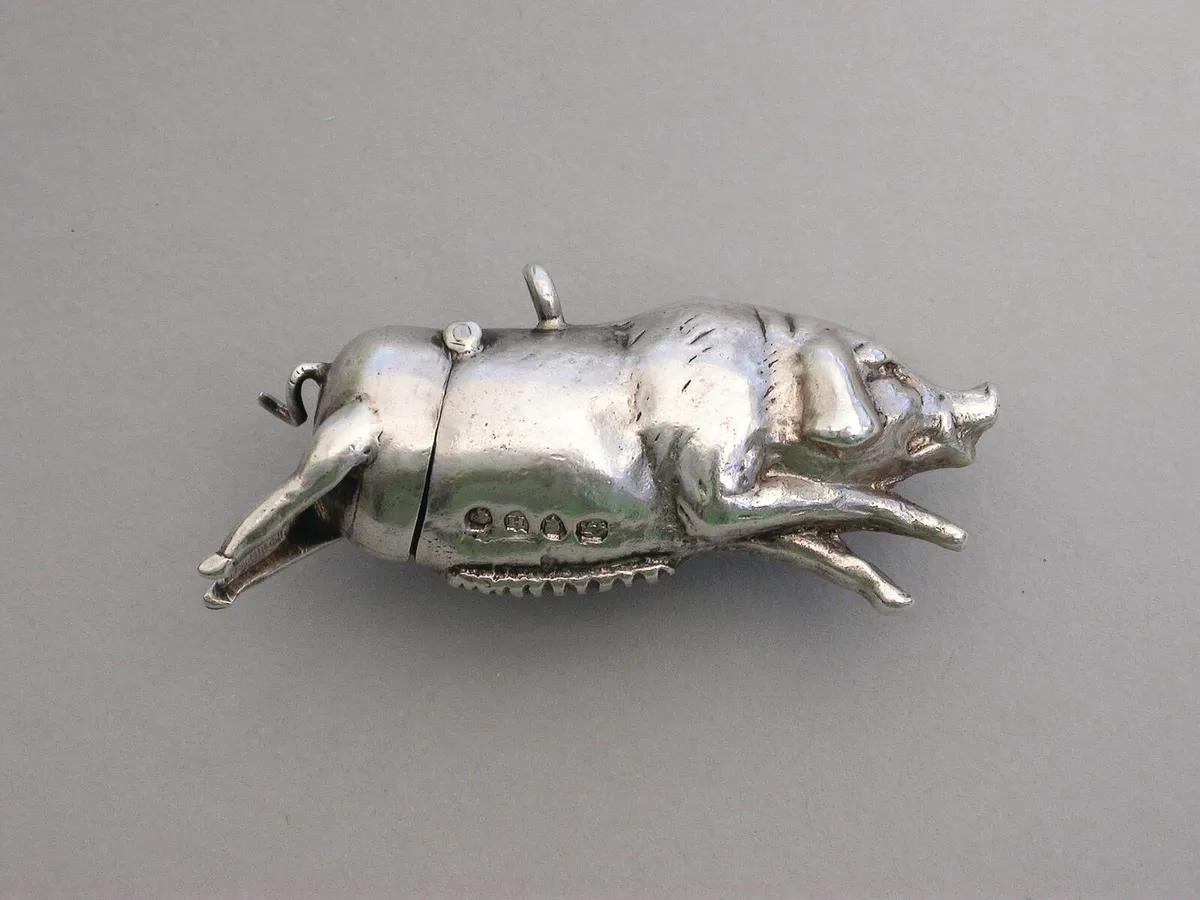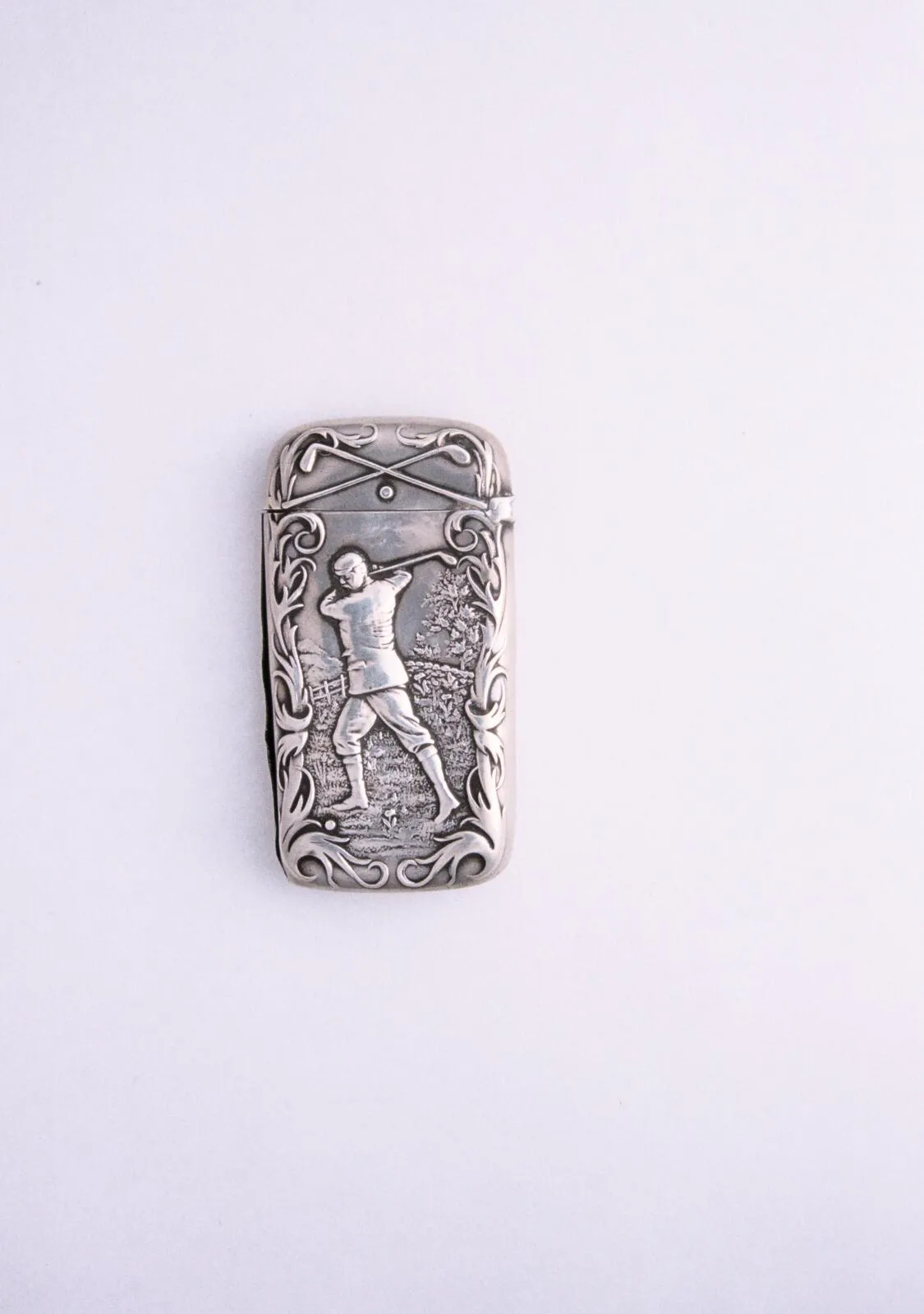Small but perfectly formed, vesta cases were first created in the early 19th century, following the manufacture of friction ‘Lucifer’ matches in the 1820s. These matches could ignite spontaneously from the heat of friction, making it dangerous to carry them loose in a pocket. They also needed to be kept dry, so compact vesta cases were created to hold enough matches for a day’s smoking.
‘Vesta was the Roman goddess of hearth and home,’ explains Andrew Campbell, founder and owner of AC Silver. ‘The match company Swan named a brand of their short matches ‘Vestas’, which they began producing in 1906. A ‘match’ was known as a ‘vesta’ up until the 20th century when ‘match’ became the favoured term.’
Most vesta cases have a serrated lower border for striking matches on. ‘The inside of the case would often be gilded to protect the silver from the sulphurous head of the match, which would otherwise tarnish the metal,’ adds Andrew. ‘Other features, such as a cheroot cutter, were sometimes included, too.’

Vesta cases were created in a specific time frame when matches were a necessity, but they became obsolete shortly afterwards when, in the early 20th century, vesta cases were replaced with throwaway paper ‘matchbooks’ with ‘tear-off’ matches and pocket-sized petrol lighters (invented by Louis V Aronson in 1926). ‘During the Second World War, the popularity of lighters rose as soldiers found they lasted a long time and were easy to refill,’ explains Andrew. ‘Thus began the demise of the vesta case. This makes them especially collectable.’
You might also like everything you need to know about silver
It’s not expensive to start collecting vesta cases. You can pick up a simple Edwardian example for around £20 in an antiques market, but you can pay thousands for a really rare design. An enamelled Punch and Judy tent vesta case by Sampson Mordan & Co fetched £6,500 at Christie’s South Kensington in 1999.
‘The ones that sell really well are the unusual or novelty ones,’ reveals silver dealer Daniel Bexfield. ‘Sampson Mordan & Co of London made lots of particularly interesting ones, including sentry box-style designs with little soldiers, which are always sought after.’

‘There’s fantastic variety right across the price range – different shapes and forms,’ reveals silver dealer Alastair Dickenson. ‘The colourful, enamelled ones tend to be the most desirable. They’re great fun, as well. I’ve seen a footballer’s leg with a football attached to the end, a privy, nude ladies, golfing, fishing and shooting scenes… there’s something for everyone.’
You might also like a guide to silver hallmarks
Daniel informs us that vesta cases are most certainly back in vogue. ‘You can’t use safety matches with vesta cases, but they’re quite fashionable again now – more men are wearing waistcoats, so they want a watch in one pocket and a vesta case in the other.’
Many of the older Victorian and Edwardian vesta cases were monogrammed with initials, so these particular examples can be presented as lovely gifts if you can find the right letters for a loved one. They’re the perfect size to fit inside a Christmas stocking, too.
Where to see antique vesta cases
- V&A Museum, London
- Ashmolean Museum, Oxford
- The Fitzwilliam Museum, Cambridge
Where to buy antique vesta cases
The places to discover wonderful, collectable silver vestas
- AC Silver, Newcastle-upon-Tyne
- Alastair Dickenson, Surrey
- Daniel Bexfield Antiques, London
- Piers Rankin Antique Silver, London
- William Walter Antiques, London
